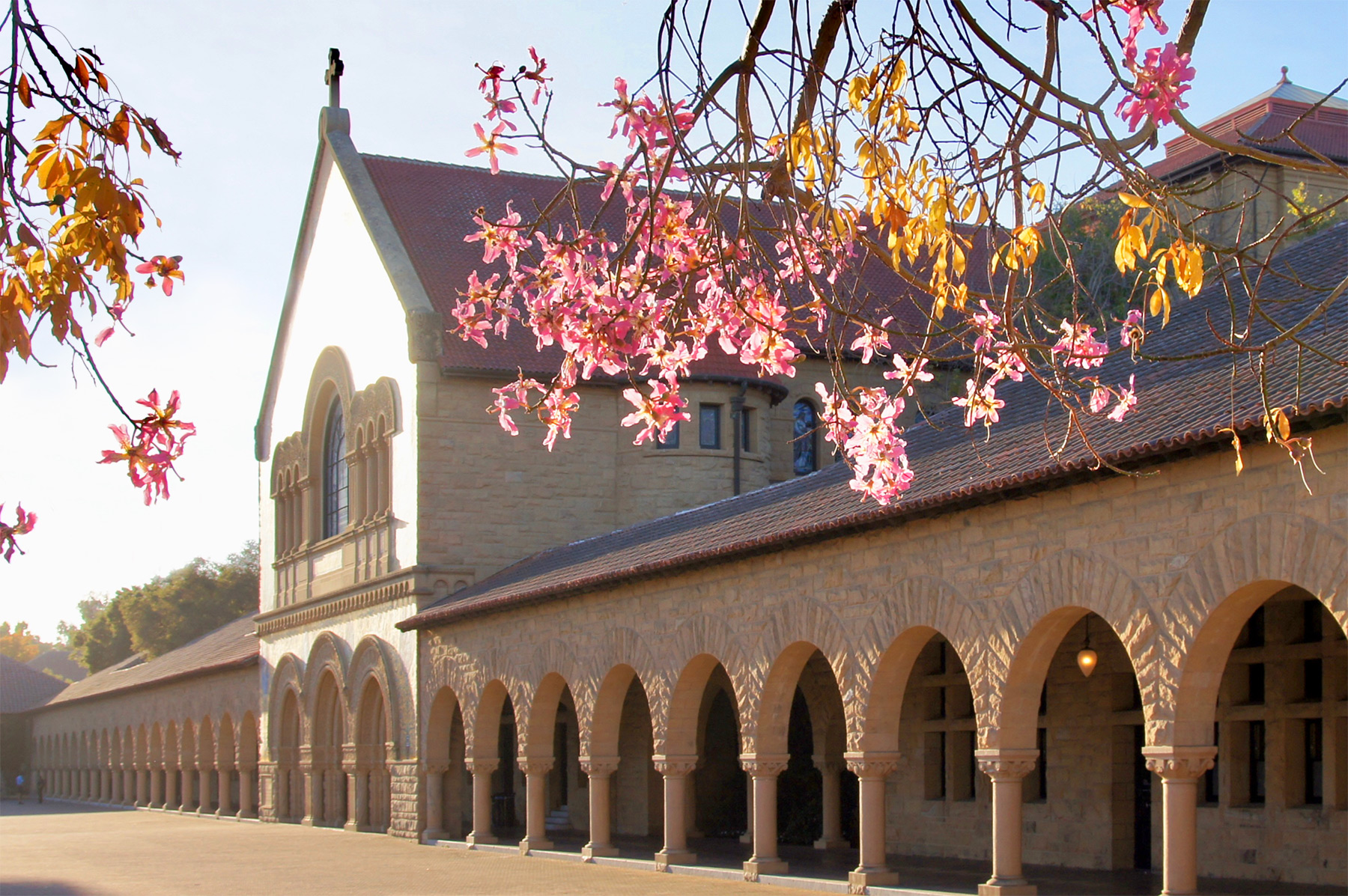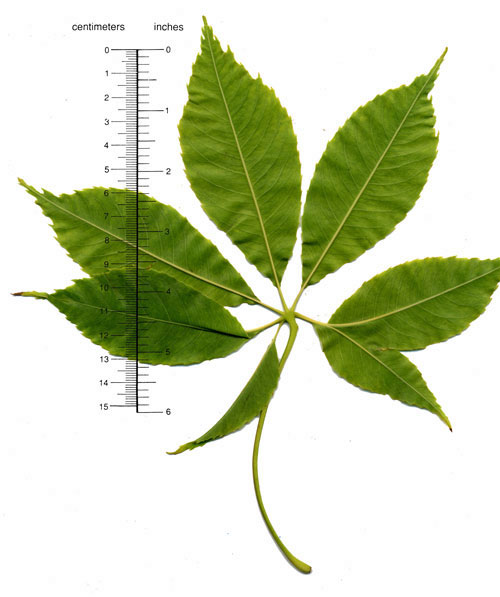Ceiba speciosa
 floss-silk tree
floss-silk tree

A striking tree in September/October when it is covered in large, flimsy flowers with five 3-inch pink-and-white petals each having brown dashes showing the way toward the central structure. This structure is an imposing hollow column representing a fusion of stamens, topped by a battlement of 10 anthers and supported by five large fuzzy basal staminodes. The stigma, hidden within the anthers, reveals its location as the fruit grows. The petals are used in Brazil as threads in upholstery.
Faintly serrated light-green leaflets grouped in fives or sevens are overpowered during the flowering season. The upper trunk and branches are green, but the most distinctive feature is the wicked-looking array of stout spines that crowd the trunk; near the base they protrude by an inch or more. What the tree’s ancestors had in mind to guard against, as they evolved and thus fit themselves for survival, offers food for thought; perhaps an arborivorous dinosaur!
There is one in the outer southwest island in the Inner Quad that is visited by hummingbirds; one on the south side of the Post Office, with a hole through its trunk, that bears fruit; and one near the Clock Tower (with seven trunks!). Another specimen is on Galvez Mall east of Green Library. But the most striking site is Parking Structure 1 on Campus Drive West and Roth Way, where two rows of seven each are rooted in the dim interior. The trees evidently think they are in their ancestral jungle and have performed quite differently from the isolated specimens that grow in full sunlight elsewhere on campus. They had pushed upward to the full height of the structure by 2002 and fruited more than once.
The fruit have the general appearance of large green-colored avocados, but can be even larger, reaching 8 inches in length and weighing up to 1¾ pounds. When unripe, they have the texture of a juicy cucumber, with a seed-bearing core. On ripening, pods open to expose masses of white cottony or kapok-like material that ultimately fall to the floor far below and perhaps act as a barrier to rodents seeking the tiny seeds. Commercial kapok, exported mainly from Java, for innumerable uses, comes from Asian members of the bombax family (such as Ceiba pentandra).
The older genus name, Chorisia, refers to Ludwig Choris (1795–1828), who sailed around the world as an artist with Otto von Kotzebue (1787–1846); Choris is of local interest for having left paintings (held by the Bancroft Library, U.C. Berkeley) of Native Americans, made in 1816 at the Carmel and San Francisco missions (portraits, dance groups, war dance costumes). See The Tall Tree, Palo Alto Historical Association, Vol. 3, No. 2, October 1969.
Name derivation: Ceiba – version of South American name; speciosa – beautiful.
Related material: Trees of San Diego: Floss-Silk Trees, Steve Brigham, Pacific Horticulture, Oct 2004.
About this Entry: The main text of this entry is from the book Trees of Stanford and Environs, by Ronald Bracewell, published 2005. Genus and family name updated Sep 2017 (SP). Native range clarified Oct 2021 (SP).




